Showing 325–336 of 383 results
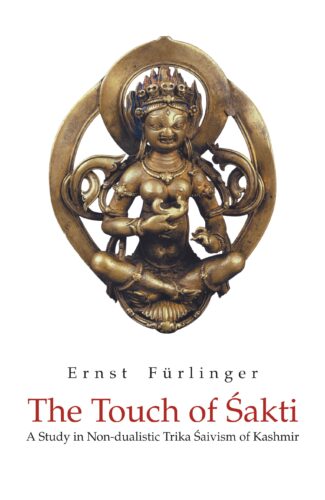
This volume presents an overview of the historical development of the Kashmirian Saiva traditions, especially of the non-dualistic system, Trika, and deals with the bodily experience of the transcendent power, the Sakti, in the context of the Saiva Kundalini-Yoga.
The Kashmirian Shaiva tradition in its non-dualistic form in particular is one of the richest philosophical traditions of India that have survived to the present day. This book by the noted scholar, Dr Furlinger, deals with the bodily experience of the transcendent power, the Shakti, in the context of the Shaiva Kundalini-Yoga. In an insightful introduction, the scholar presents an overview of the historical development of the Kashmirian Shaiva traditions, especially of the non-dualistic system, Trika, made famous by the work of its famous proponent, Abhinavagupta. He studies the theme of shaktisparsha in selected texts of non-dualistic Trika Shaivism of Kashmir, focusing on Utpaladeva’s Shivastotravali of the tenth century and Abhinavagupta’s Tantraloka of the eleventh century. The texts are analysed along with a noted commentary associated with each to shed light on the different contexts and meanings in which the word sparsha occurs in connection with Shakti, the divine power, revered as the Goddess. The study examines sparsa as one of the highest stages in the spiritual ascent in the Tantraloka and its corresponding description in the Shivastotravali. The difference in the notion of sparsa in the two texts is also brought out. It thus reveals the liberating and critical potential of the non-dualistic Shaiva tradition of Kashmir. The book will interest scholars and students of Indology associated with Indian religious-philosophical traditions.
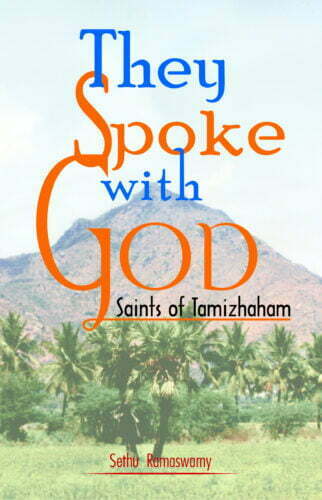
This book, which will interest general readers and scholars, and particularly addressed to young readers, highlights the lives and times of some of the saints of Tamil land who have been the votaries of peace, universal brotherhood and spirituality.
The lives and teachings of saints have a special place in Indian tradition. Saints have been the votaries of peace, universal brotherhood and spirituality and were, and are, among the most loved and revered personages in Indian history and culture. This volume comes as a tribute to the prominent saints of Tamizhaham or Tamil land, who have contributed immensely to Indian culture and society.
It highlights the lives and times of some of the noted exponents of the Shaivite path of devotion. It begins with discussions on some of the famous Nayanar saints like Somasimarar Nayanar and Karaikkal Ammaiyar, and takes up the contributions of medieval bhakti saints like Sridhara Venkateswara Ayyaval and Avudai Akkal. The concluding section deals with the ecstatic saints of the region of the late nineteenth and twentieth centuries. This part contains an account of a woman saint of our own times, Andavan Pichchai Amma, as well. The lives of the saints are told in a simple language that wonderfully unravels their complex messages. The work shows that though the saints had diverse experiences and expressed their spirituality in different ways, the lives of all these saints have an ecstatic and a celebratory quality about them.
The volume will interest general readers as well as scholars. It is particularly addressed to young readers in an effort to introduce them to Indian spiritual and cultural legacy.
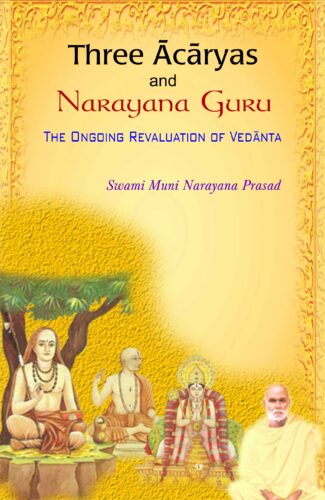
The book speaks about the philosophy of Narayana Guru as guidance to study and compare the philosophies of the acaryas, particularly those of Shankara, Ramanuja and Madhva. It also explores the concepts of avidya and maya, atomicity of the self, consciousness and the self, tat tvam asi, karma and reincarnation and the ultimate liberation.
Shankara, Ramanuja and Madhva are considered the three acaryas of South India who commented on the three basic texts of Vedanta, that is, the Upanishads, the Brahma-Sutras and the Bhagavad-Gita, and therefrom originated the three major schools within the Vedanta fold — Advaita, Vishishtha advaita and Dvaita respectively. This volume is concerned with the philosophy of the famous saint-teacher Narayana Guru and his perspectives on the philosophies of the three acaryas.
The book uses the philosophy of Narayana Guru as the guide to study and compare the philosophies of the acaryas. It begins with the life sketches of the three acaryas and discusses their philosophies, especially the various specific viewpoints they maintained and the points on which they disagreed. It explores the ideas of the acaryas on avidya and maya, atomicity of the self, consciousness and the self, tat tvam asi, karma and reincarnation and the ultimate liberation. It also scrutinises their use of terms like that of atha which literally means now then. It examines the perception of Narayana Guru vis-a-vis the particular philosophical positions in a unified manner. It also contains the full text, transliteration and translation of the original Vedanta-Sutras of Narayana Guru.
The volume will interest students and scholars who are engaged in advanced studies on the philosophy of Vedanta, and persons keen on acquainting themselves with the philosophy of Narayana Guru.
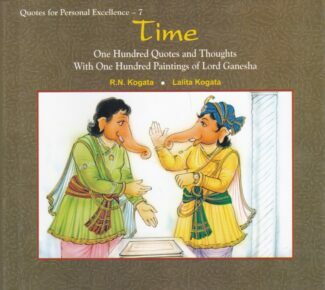
Time is eternal, all-pervasive, money, a good counsellor, and the best-known medicine. The 100 “quotable” quotes on Work in this book are a gold mine of wisdom that renews his spirit and makes him more creative and help him utilize time better for the self and the society. Each quote has a stimulating painting of Lord Ganesha, the Lord of Peace, Prosperity and Wisdom.
Time is eternal and all-pervasive. It is the most potent factor in human life. It waits for none. Time is money. To remind the significance and criticality of Time, the authors have presented 100 exceptional quotes on Time, each quote is enjoined by a stimulating painting of Lord Ganesha, the Lord of Peace, Prosperity and Wisdom. Some of these enlightening and ever-inspiring quotes are from impeccable personalities, who have rendered invaluable services and contributions to the progress of this world. Everything happened, happens and will happen fall under the ambit of time.
Time is the best-known medicine and a good leveller and counsellor. It enables us to overcome the losses of the past and energize to run towards new goals. Though alpha and omega in nature, time is too short for a human being. Thus it reminds everyone to act wisely and harness it fruitfully as the wise, talented and the enlightened do.
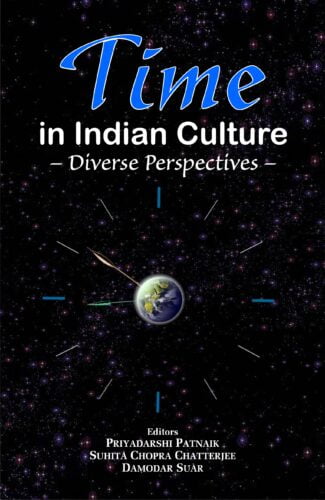
The volume is a comprehensive collection of papers dealing with the philosophical, religious/spiritual, and linguistic aspects of time, and time as understood in Indian art, music and other aspects of culture.
The concept of time has been variously interpreted and debated in the Indian tradition since ancient times. It is referred to by the word kala which has many meanings like time personified, time as death, time as a cycle and so on, and other words like samaya, vela, kshana as well, which refer to various aspects of time.
The volume is a comprehensive collection of papers dealing with the philosophical, religious/spiritual and linguistic aspects of time, and time as understood in Indian art, music and other aspects of culture. Scholars explore themes such as the notion of beginning of time in cosmology, theology and philosophy, time as interpreted by the Indian philosophical systems, use of the notion of time by Bhartrihari, and concepts of time as interpreted by Indian poets. They examine time as experienced in the seasonal, ritual cycles of Indian social, cultural and physical life, use of tala and laya in north Indian music, interpretation of time in the Ragamala painting tradition, perception of time in Indian architecture, and in Indian popular culture.
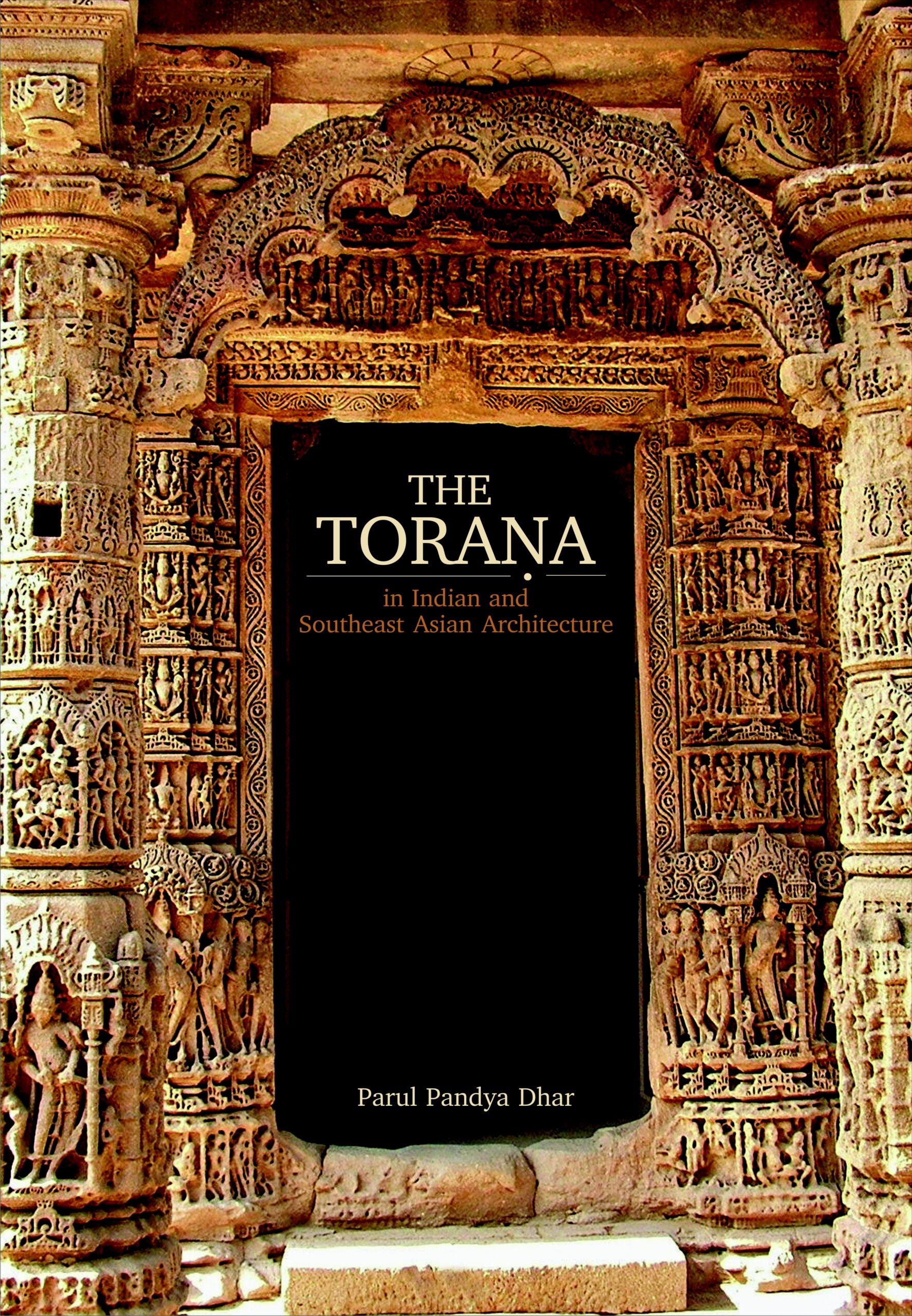
The book details the significance of the toranas arched portals or festoons in ancient and medieval architecture of South and South-east Asia, with special emphasis on Indian representation. The text is richly illustrated with photographs and line drawings from remote sites, museums and archival collections.
The present work discusses in depth the subject of toraªas (arched portals or festoons) in the ancient and medieval architecture of South- and South-east Asia, with special emphasis on Indian representations. Their antiquity and rationale; their continued presence in association with stupas, caves, temples, mosques, cities, forts, and palaces; their myriad forms and transformations; and their aesthetic and symbolic relationship to the structure in question are analyzed stage-by-stage in this book. The rich corpus of toraªas included here has been critically and comparatively analyzed in relation to traditional practice, as well as in the light of the medieval architectural treatises, historical records, and other literary sources. The approach is micro in the sense of being focused on a specific architectural element but macro in its regional and temporal span. In addition, the exposition reveals the grammar as well as the manifold visual formulations of the toraªa as representative of the basic principles of traditional Indian architectural ornament: integral to the structure, functionally apt, aesthetically significant, and visually evocative, with sound and sophisticated design principles. The text is richly illustrated, bringing together material scattered over several well-known as well as remote sites, museums, and archival collections. Whereas a major part of this book details the journey of the toraªa in ancient and medieval India, the section on early beginnings also includes references from Pakistan and Afghanistan, and the final chapter surveys, with a view to compare, parallel yet distinct expressions in Cambodia, Thailand, Champa, Indonesia, Myanmar, Nepal, and Sri Lanka.

This English version of Vicaracandrodaya elucidates the basic concepts of Advaita Vedanta as a dialogue between a guru and his disciple. A true knowledge seeker who studies this text under a brahmanistha guru will get to know the secrete knowledge of Vedanta. Also, it is a ready reference to the basic concepts in Pancadasi of Vidyaranya and Vicarasagara of Niscaladasa.
A prakarana in old Hindi (one of the regional mixed dialects), Vicaracandrodaya elucidates the basic concepts of Advaita Vedanta in the form of questions and answers. Pandit Pitambar, the author of the text, presents this work as a dialogue between a guru and his disciple. This book is an English translation of Vicaracandrodaya, by S. Bhuvaneshwari. It is spread across 249 questions and their answers, and takes the reader into the essence of the entire Vedantashastra. It also has a Laghu-vedanta-kosha explaining the basic Vedantic terms and a chapter as index providing quick reference to the basic concepts of Advaita Vedanta.
The author enunciates that a true knowledge seeker who studies this text under a brahmanishtha guru will get to know the secrete knowledge of Vedanta. And this knowledge will dispel darkness from his mind as the rising moon dispels darkness from the world. However, he insists that it should be studied from a guru with shraddha as Vedanta cannot be grasped without the guidance of an enlightened teacher. Also, this book serves as a ready reference to the basic concepts as discussed in Pancadashi of Vidyaranya and Vicarasagara of Nishcaladasa.
This volume is both a guide to the beginners in Vedanta and a text for nididhyasana. It will benefit all the people who dwell in the domain of Vedanta.

This English version of Vicaracandrodaya elucidates the basic concepts of Advaita Vedanta as a dialogue between a guru and his disciple. A true knowledge seeker who studies this text under a brahmanistha guru will get to know the secrete knowledge of Vedanta. Also, it is a ready reference to the basic concepts in Pancadasi of Vidyaranya and Vicarasagara of Niscaladasa.
A prakarana in old Hindi (one of the regional mixed dialects), Vicaracandrodaya elucidates the basic concepts of Advaita Vedanta in the form of questions and answers. Pandit Pitambar, the author of the text, presents this work as a dialogue between a guru and his disciple. This book is an English translation of Vicaracandrodaya, by S. Bhuvaneshwari. It is spread across 249 questions and their answers, and takes the reader into the essence of the entire Vedantashastra. It also has a Laghu-vedanta-kosha explaining the basic Vedantic terms and a chapter as index providing quick reference to the basic concepts of Advaita Vedanta.
The author enunciates that a true knowledge seeker who studies this text under a brahmanishtha guru will get to know the secrete knowledge of Vedanta. And this knowledge will dispel darkness from his mind as the rising moon dispels darkness from the world. However, he insists that it should be studied from a guru with shraddha as Vedanta cannot be grasped without the guidance of an enlightened teacher. Also, this book serves as a ready reference to the basic concepts as discussed in Pancadashi of Vidyaranya and Vicarasagara of Nishcaladasa.
This volume is both a guide to the beginners in Vedanta and a text for nididhyasana. It will benefit all the people who dwell in the domain of Vedanta.

This work presents a study of the twelve principal Upanisads, thus unfolding the spirit and substance of Upanishadic thought. It offers the text of the Upanisads in Devanagari and its translation in English along with detailed notes incorporating the commentaries of prominent spirit-ual thinkers and teachers including Sankaracarya and Sankarananda.
The Upanishads are perhaps one of the oldest philosophical treatises concerned with the mystery of the Absolute. This work (in three volumes) presents a study of the twelve principal Upanishads , thus unfolding the spirit and substance of Upanishadic thought. Written in a lucid style, it offers the text of the Upanishads in Devanagari and its translation in English along with detailed noted incorporating the commentaries of prominent spiritual thinkers and teachers including Shankaracarya and Shankaranand. The authors, scholars who have put in years of intense study on the subject, here offer a fresh approach and new insights into the philosophy of absolute unity as taught by the Upanishads and its quest for answers to abstruse questions like the origin of the universe, the nature of deity and the soul, and connection of mind and matter. The volumes are a must for scholars of Indian philosophy as well as students, and especially those genuine aspirants who wish to achieve moksha by the process of yoga for moksha is not possible without understanding the meaning of the Upanishads.
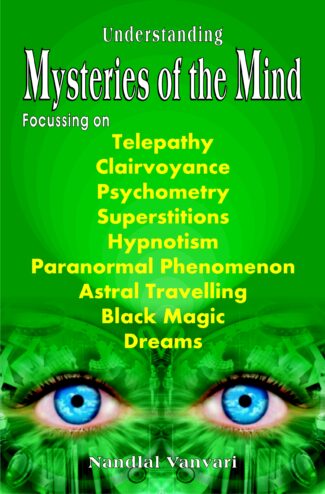
The book deals with the occult sciences that address the mysteries of the mind and attempt to understand the laws of nature and master them. Using perspectives of researchers and practitioners of these sciences, the book studies the basis and practice of telepathy, clairvoyance, psychometry, hypnotism, paranormal phenomenon, astral travelling and dreams.
The book deals with some of the occult sciences that attempt to address the mysteries of the mind and understand the laws of nature and master them. Using perspectives and ideas of researchers and practitioners of these sciences, the book, with an easy-to-follow text, studies the basis and practice of telepathy, clairvoyance, psychometry, hypnotism, paranormal phenomenon, astral traveling and dreams. Citing experiments conducted in the past and giving a history of the evolution of the practice of each discipline, it discusses the nature of these sciences and the relevance of each in promoting creativity and developing skills and spiritual and mental advancement in general. It goes in detail into what thought is and what specific thoughts, dreams and superstitions indicate and use of certain materials like ESP cards, mirrors and crystals in the practice of the occult sciences. The volume will prove indispensable to psychologists, psychiatrists and neurologists, practitioners of these sciences and lay readers interested in the subject.

The book deals with the occult sciences that address the mysteries of the mind and attempt to understand the laws of nature and master them. Using perspectives of researchers and practitioners of these sciences, the book studies the basis and practice of telepathy, clairvoyance, psychometry, hypnotism, paranormal phenomenon, astral travelling and dreams.
The book deals with some of the occult sciences that attempt to address the mysteries of the mind and understand the laws of nature and master them. Using perspectives and ideas of researchers and practitioners of these sciences, the book, with an easy-to-follow text, studies the basis and practice of telepathy, clairvoyance, psychometry, hypnotism, paranormal phenomenon, astral traveling and dreams. Citing experiments conducted in the past and giving a history of the evolution of the practice of each discipline, it discusses the nature of these sciences and the relevance of each in promoting creativity and developing skills and spiritual and mental advancement in general. It goes in detail into what thought is and what specific thoughts, dreams and superstitions indicate and use of certain materials like ESP cards, mirrors and crystals in the practice of the occult sciences. The volume will prove indispensable to psychologists, psychiatrists and neurologists, practitioners of these sciences and lay readers interested in the subject.
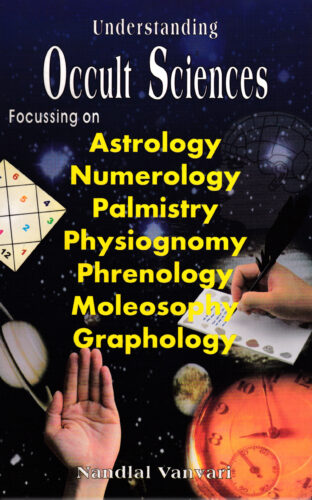
The book examines the occult sciences that deal with the birth- and name-related attributes of human beings, their bodily features and their style of writing astrology, numerology, palmistry, physiognomy, phrenology, moleosophy and graphology for deeper insights into personality and fate. With easy-to-understand examples, it reveals the way in which these sciences explain aspects of human character and mind.
The book attempts to examine those occult sciences that deal with the birth- and name-related attributes of human beings, their bodily features and their style of writing for deeper insights into personality and fate topics like astrology, numerology, palmistry, physiognomy, phrenology, moleosophy and graphology. In a simple language and with easy-to-understand examples and illustrations, Dr. Nandlal Vanvari reveals the way in which these sciences explain aspects of human character and mind by going beyond the environmental conditioning of man and his trait of reducing everything to automatic reflex. Keeping the modern scientific perspective in mind throughout, he delves into horoscopes and effects of the planets and constellations, the significance of numbers in numerology and their association with planets, the palm lines, significance of moles located in different parts of the body and so on. The work will be useful for those associated with the sciences of the mind as well as general readers interested in occult sciences.
| There are no products |